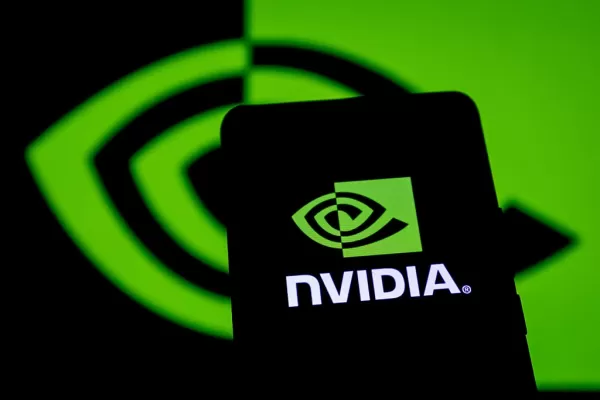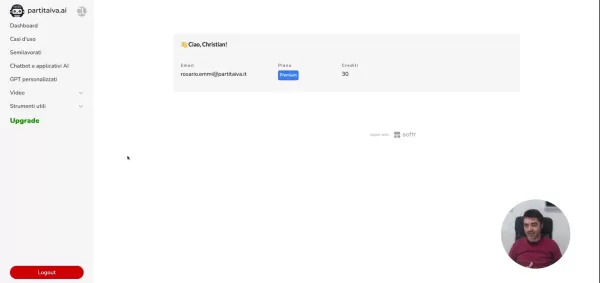Unlocking AI Potential: Transforming Data with Graphs and AI
In today’s data-driven landscape, artificial intelligence (AI) holds extraordinary potential to transform industries. However, hurdles like hallucinations, trust concerns, and a lack of explainability often stand in the way of widespread adoption. This article explores how shifting data analysis from 2D to 3D using graphs and AI can unlock the full potential of these technologies, delivering more trustworthy and insightful results.
Key Takeaways
- Data transformation through graph data and AI enhances analysis capabilities.
- Explainable AI can address trust and adoption challenges.
- Knowledge graphs provide context and relationships for AI insights.
- Zero-trust security models ensure reliable AI applications.
- Graph databases empower AI agents to tackle real-world problems.
The Power of Transforming Data with Graphs and AI
Understanding the Limitations of 2D Data Analysis
Traditional data analysis often relies on two-dimensional (2D) formats like spreadsheets or relational databases. While these work well for straightforward tasks, they struggle to capture the intricate relationships and contextual details present in many real-world datasets. For instance, viewing financial transactions in a spreadsheet makes it difficult to quickly identify connections between payers, payees, and other related entities without a more advanced representation. 2D formats typically lack the capability to analyze these relationships effectively. Wouldn’t it be great if AI outputs were truly explainable?
That’s precisely the issue. Current systems and users see data as rows and columns.
That’s why some Data2 customers have consistently sought greater transparency, explainability, and insight into AI operations. In environments where failure isn’t an option, this becomes even more critical.
Embracing the Third Dimension: Introducing Graph Databases and AI
Graph databases offer a promising alternative by representing data as nodes and edges, creating a three-dimensional (3D) network of interconnected information. This approach enables a more natural and intuitive representation of complex relationships. Combining AI with graph data opens up powerful analytical capabilities that surpass traditional methods.
Graph databases shine when answering questions like:
- How does your data relate to other things?
- Tell me about ‘this.’
Unlike relational databases (like Excel or SQL), graphs connect data points more extensively, though each connection requires more effort to establish.
Practically speaking, this looks like:
- Visual representations of interconnected concepts.
- Easily seeing what connects to what.
- Crawling the connective tissue between entities or relationships within the data structure.
John Brewton notes that the power of Data2’s approach lies in helping intelligence and analytics teams crawl the connective tissue between entities and relationships within the data structure.

The Benefits of Explainable AI
One of the key advantages of transforming data analysis with graphs and AI is achieving explainable AI (XAI). This means humans can understand the reasoning behind AI-driven decisions, fostering trust and transparency.
Explainability is especially vital in sectors like healthcare, finance, and government, where accountability and transparency are essential. It helps mitigate model drift and boosts confidence in AI outputs.
- Reduce risks by proving output validity, gaining buy-in.
- Understand the ‘how’ and ‘why’ of AI decisions, improving audits and explanations.
Daniel Bukowski mentions that one of the goals at Data2 was to build traceable, transparent, and explainable outcomes.

Data2: Transforming Data with Graphs and AI
Built for High-Stakes Industries
Data2 launched in mid-2023 under the leadership of John Brewton, aiming to serve industries dealing with high-stakes scenarios such as:
- Defense
- Intelligence
- Energy
- Finance
- Healthcare
Their software platform focuses on making data traceable, explainable, and transparent.
Data2 leverages tools like Cursor and GitHub CoPilot to streamline code development.

How Data2 Uses Neo4j to Connect Data
Data2 is built on the Neo4j Knowledge Graph, designed to integrate data from diverse sources and apply AI to better comprehend the data and its context. Neo4j simplifies crawling connections to make sense of the data, empowering AI applications.
Neo4j’s strengths include:
- No fixed starting point, unlike linear data sheets.
- Understanding relationships within data structures to connect all points seamlessly.
- Flexibility with AI, enabling traceable, transparent, and explainable solutions.
Major players like Microsoft and Google also rely on Neo4j for similar reasons.

Actionable Steps for Transformative Data Analytics
To harness the transformative potential of graph databases and AI, follow these steps:
- Identify key relationships within your data.
- Select the appropriate data structure (graph, vector databases, etc.).
- Embed unstructured data while tracking every connection and its context.
- Enrich graph data by contextualizing connections.
- Implement explainable AI techniques for transparency.
- Prioritize zero-trust security for high-stakes applications.
- Invest in training and documentation.

Data2 Pricing
Schedule a consultation with Data2 to explore tailored solutions for industries like energy, defense, and finance. Their website lists some high-level use cases.
Pros and Cons of Graph Databases with AI
Pros
- Enhanced relationship analysis for complex datasets.
- Improved contextual understanding via AI algorithms.
- Enable explainable AI models for greater transparency.
- Increased inferential power as technology costs decrease.
Cons
- Complex implementation and management require specialized expertise.
- Scaling graph databases and AI models can be costly and challenging.
- AI algorithms may inherit biases from training data, leading to unfair outcomes.
Data2 Core Features
Data2 was designed to make AI usable and reliable in high-stakes industries. Key features include:
- Chain of Cognition: Traceability for AI inferences from raw data to insights.
- Zero-Trust Security Model: Ensures security and data integrity at every node.
- No-Code Tooling: Access vector stores, graph databases, and visualizations from a single interface.
Data2 Use Cases
Data2 addresses business challenges in areas such as:
- Fraud detection.
- Insider threat prevention.
- Threat mitigation.
- Patient 360 view.
- Social network analysis.
Frequently Asked Questions
What are common barriers to AI adoption?
Hallucinations, trust issues, and explainability challenges prevent widespread adoption.
Which industries need explainable AI the most?
Industries requiring zero tolerance for errors—such as defense, intelligence, energy, finance, and healthcare—are prime candidates.
What is a knowledge graph?
A knowledge graph is a collection of interconnected descriptions of real-world objects, events, and concepts.
Is Data2 a graph database?
No, Data2 is a platform built on the Neo4j graph database.
Future of Graph Databases and AI
The fusion of graph databases and AI holds immense promise for data analysis, knowledge discovery, and intelligent decision-making. By combining the strengths of both
Related article
 Nvidia Reports Two Major Customers Drove 39% of Q2 Revenue
Nvidia's Revenue Concentration Highlights AI Boom DependenciesThe chipmaker's recent SEC filing reveals staggering customer concentration, with two unnamed clients accounting for 39% of Nvidia's record $46.7 billion Q2 revenue - marking a 56% annual
Nvidia Reports Two Major Customers Drove 39% of Q2 Revenue
Nvidia's Revenue Concentration Highlights AI Boom DependenciesThe chipmaker's recent SEC filing reveals staggering customer concentration, with two unnamed clients accounting for 39% of Nvidia's record $46.7 billion Q2 revenue - marking a 56% annual
 AI Business Plan Generator: Build Your Winning Strategy Fast
Modern entrepreneurs can't afford to spend weeks crafting business plans when AI solutions deliver professional-quality strategy documents in minutes. The business planning landscape has transformed dramatically with intelligent platforms that analyz
AI Business Plan Generator: Build Your Winning Strategy Fast
Modern entrepreneurs can't afford to spend weeks crafting business plans when AI solutions deliver professional-quality strategy documents in minutes. The business planning landscape has transformed dramatically with intelligent platforms that analyz
 Marvel Delays Next Two Avengers Films, Adjusts Phase 6 Release Schedule
Marvel Studios has announced significant schedule changes for its upcoming Avengers franchise installments. Industry publication The Hollywood Reporter reveals that Avengers: Doomsday will now debut on December 18th, 2026 instead of its originally pl
Comments (2)
0/200
Marvel Delays Next Two Avengers Films, Adjusts Phase 6 Release Schedule
Marvel Studios has announced significant schedule changes for its upcoming Avengers franchise installments. Industry publication The Hollywood Reporter reveals that Avengers: Doomsday will now debut on December 18th, 2026 instead of its originally pl
Comments (2)
0/200
![ScottMitchell]() ScottMitchell
ScottMitchell
 August 23, 2025 at 11:01:15 AM EDT
August 23, 2025 at 11:01:15 AM EDT
Mind-blowing how AI and graphs can reshape data analysis! But those hallucination issues make me wonder if we’re ready to fully trust it yet. 🤔


 0
0
![JackMoore]() JackMoore
JackMoore
 August 17, 2025 at 11:01:00 AM EDT
August 17, 2025 at 11:01:00 AM EDT
This article really opened my eyes to how graphs can make AI more trustworthy! It's wild to think about data transforming industries like this. Anyone else excited about AI finally becoming more explainable? 😄


 0
0
In today’s data-driven landscape, artificial intelligence (AI) holds extraordinary potential to transform industries. However, hurdles like hallucinations, trust concerns, and a lack of explainability often stand in the way of widespread adoption. This article explores how shifting data analysis from 2D to 3D using graphs and AI can unlock the full potential of these technologies, delivering more trustworthy and insightful results.
Key Takeaways
- Data transformation through graph data and AI enhances analysis capabilities.
- Explainable AI can address trust and adoption challenges.
- Knowledge graphs provide context and relationships for AI insights.
- Zero-trust security models ensure reliable AI applications.
- Graph databases empower AI agents to tackle real-world problems.
The Power of Transforming Data with Graphs and AI
Understanding the Limitations of 2D Data Analysis
Traditional data analysis often relies on two-dimensional (2D) formats like spreadsheets or relational databases. While these work well for straightforward tasks, they struggle to capture the intricate relationships and contextual details present in many real-world datasets. For instance, viewing financial transactions in a spreadsheet makes it difficult to quickly identify connections between payers, payees, and other related entities without a more advanced representation. 2D formats typically lack the capability to analyze these relationships effectively. Wouldn’t it be great if AI outputs were truly explainable?
That’s precisely the issue. Current systems and users see data as rows and columns.
That’s why some Data2 customers have consistently sought greater transparency, explainability, and insight into AI operations. In environments where failure isn’t an option, this becomes even more critical.
Embracing the Third Dimension: Introducing Graph Databases and AI
Graph databases offer a promising alternative by representing data as nodes and edges, creating a three-dimensional (3D) network of interconnected information. This approach enables a more natural and intuitive representation of complex relationships. Combining AI with graph data opens up powerful analytical capabilities that surpass traditional methods.
Graph databases shine when answering questions like:
- How does your data relate to other things?
- Tell me about ‘this.’
Unlike relational databases (like Excel or SQL), graphs connect data points more extensively, though each connection requires more effort to establish.
Practically speaking, this looks like:
- Visual representations of interconnected concepts.
- Easily seeing what connects to what.
- Crawling the connective tissue between entities or relationships within the data structure.
John Brewton notes that the power of Data2’s approach lies in helping intelligence and analytics teams crawl the connective tissue between entities and relationships within the data structure.

The Benefits of Explainable AI
One of the key advantages of transforming data analysis with graphs and AI is achieving explainable AI (XAI). This means humans can understand the reasoning behind AI-driven decisions, fostering trust and transparency.
Explainability is especially vital in sectors like healthcare, finance, and government, where accountability and transparency are essential. It helps mitigate model drift and boosts confidence in AI outputs.
- Reduce risks by proving output validity, gaining buy-in.
- Understand the ‘how’ and ‘why’ of AI decisions, improving audits and explanations.
Daniel Bukowski mentions that one of the goals at Data2 was to build traceable, transparent, and explainable outcomes.

Data2: Transforming Data with Graphs and AI
Built for High-Stakes Industries
Data2 launched in mid-2023 under the leadership of John Brewton, aiming to serve industries dealing with high-stakes scenarios such as:
- Defense
- Intelligence
- Energy
- Finance
- Healthcare
Their software platform focuses on making data traceable, explainable, and transparent.
Data2 leverages tools like Cursor and GitHub CoPilot to streamline code development.

How Data2 Uses Neo4j to Connect Data
Data2 is built on the Neo4j Knowledge Graph, designed to integrate data from diverse sources and apply AI to better comprehend the data and its context. Neo4j simplifies crawling connections to make sense of the data, empowering AI applications.
Neo4j’s strengths include:
- No fixed starting point, unlike linear data sheets.
- Understanding relationships within data structures to connect all points seamlessly.
- Flexibility with AI, enabling traceable, transparent, and explainable solutions.
Major players like Microsoft and Google also rely on Neo4j for similar reasons.

Actionable Steps for Transformative Data Analytics
To harness the transformative potential of graph databases and AI, follow these steps:
- Identify key relationships within your data.
- Select the appropriate data structure (graph, vector databases, etc.).
- Embed unstructured data while tracking every connection and its context.
- Enrich graph data by contextualizing connections.
- Implement explainable AI techniques for transparency.
- Prioritize zero-trust security for high-stakes applications.
- Invest in training and documentation.

Data2 Pricing
Schedule a consultation with Data2 to explore tailored solutions for industries like energy, defense, and finance. Their website lists some high-level use cases.
Pros and Cons of Graph Databases with AI
Pros
- Enhanced relationship analysis for complex datasets.
- Improved contextual understanding via AI algorithms.
- Enable explainable AI models for greater transparency.
- Increased inferential power as technology costs decrease.
Cons
- Complex implementation and management require specialized expertise.
- Scaling graph databases and AI models can be costly and challenging.
- AI algorithms may inherit biases from training data, leading to unfair outcomes.
Data2 Core Features
Data2 was designed to make AI usable and reliable in high-stakes industries. Key features include:
- Chain of Cognition: Traceability for AI inferences from raw data to insights.
- Zero-Trust Security Model: Ensures security and data integrity at every node.
- No-Code Tooling: Access vector stores, graph databases, and visualizations from a single interface.
Data2 Use Cases
Data2 addresses business challenges in areas such as:
- Fraud detection.
- Insider threat prevention.
- Threat mitigation.
- Patient 360 view.
- Social network analysis.
Frequently Asked Questions
What are common barriers to AI adoption?
Hallucinations, trust issues, and explainability challenges prevent widespread adoption.
Which industries need explainable AI the most?
Industries requiring zero tolerance for errors—such as defense, intelligence, energy, finance, and healthcare—are prime candidates.
What is a knowledge graph?
A knowledge graph is a collection of interconnected descriptions of real-world objects, events, and concepts.
Is Data2 a graph database?
No, Data2 is a platform built on the Neo4j graph database.
Future of Graph Databases and AI
The fusion of graph databases and AI holds immense promise for data analysis, knowledge discovery, and intelligent decision-making. By combining the strengths of both
 Nvidia Reports Two Major Customers Drove 39% of Q2 Revenue
Nvidia's Revenue Concentration Highlights AI Boom DependenciesThe chipmaker's recent SEC filing reveals staggering customer concentration, with two unnamed clients accounting for 39% of Nvidia's record $46.7 billion Q2 revenue - marking a 56% annual
Nvidia Reports Two Major Customers Drove 39% of Q2 Revenue
Nvidia's Revenue Concentration Highlights AI Boom DependenciesThe chipmaker's recent SEC filing reveals staggering customer concentration, with two unnamed clients accounting for 39% of Nvidia's record $46.7 billion Q2 revenue - marking a 56% annual
 AI Business Plan Generator: Build Your Winning Strategy Fast
Modern entrepreneurs can't afford to spend weeks crafting business plans when AI solutions deliver professional-quality strategy documents in minutes. The business planning landscape has transformed dramatically with intelligent platforms that analyz
AI Business Plan Generator: Build Your Winning Strategy Fast
Modern entrepreneurs can't afford to spend weeks crafting business plans when AI solutions deliver professional-quality strategy documents in minutes. The business planning landscape has transformed dramatically with intelligent platforms that analyz
 Marvel Delays Next Two Avengers Films, Adjusts Phase 6 Release Schedule
Marvel Studios has announced significant schedule changes for its upcoming Avengers franchise installments. Industry publication The Hollywood Reporter reveals that Avengers: Doomsday will now debut on December 18th, 2026 instead of its originally pl
Marvel Delays Next Two Avengers Films, Adjusts Phase 6 Release Schedule
Marvel Studios has announced significant schedule changes for its upcoming Avengers franchise installments. Industry publication The Hollywood Reporter reveals that Avengers: Doomsday will now debut on December 18th, 2026 instead of its originally pl
 August 23, 2025 at 11:01:15 AM EDT
August 23, 2025 at 11:01:15 AM EDT
Mind-blowing how AI and graphs can reshape data analysis! But those hallucination issues make me wonder if we’re ready to fully trust it yet. 🤔


 0
0
 August 17, 2025 at 11:01:00 AM EDT
August 17, 2025 at 11:01:00 AM EDT
This article really opened my eyes to how graphs can make AI more trustworthy! It's wild to think about data transforming industries like this. Anyone else excited about AI finally becoming more explainable? 😄


 0
0





























